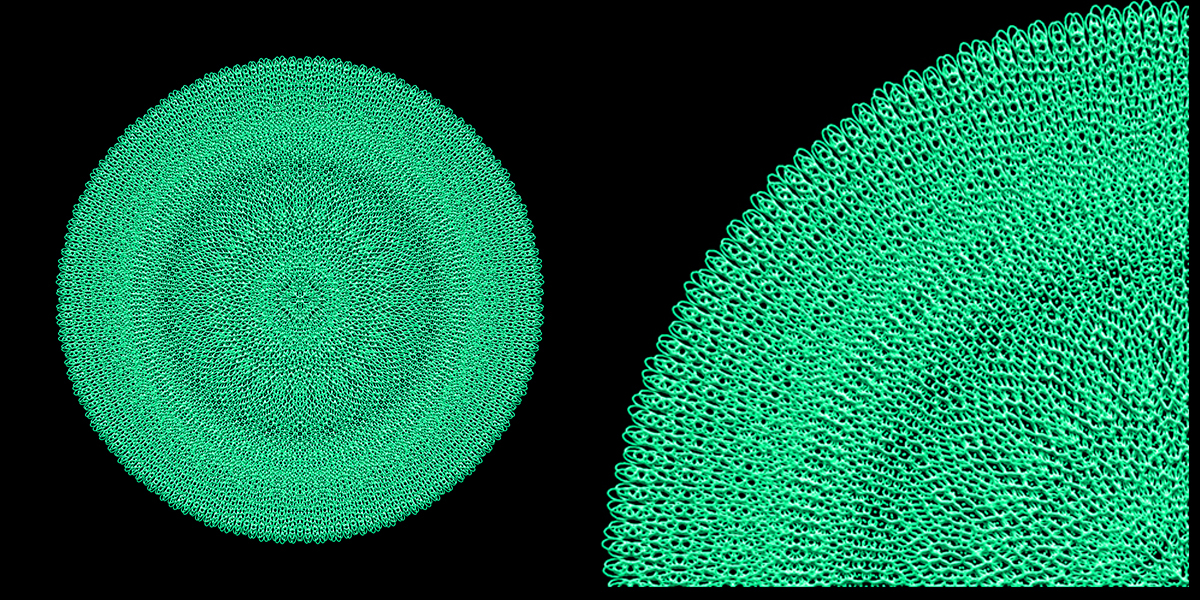
Architecture Professor Robert Krawczyk will be exhibiting at the juried 2019 Joint Mathematics Meetings (JMM) Exhibition of Mathematical Art (Mathematical Association of America [MAA] and American Mathematical Society [AMS]) held in Baltimore, Maryland, January 16–19.
The series, Fermat Spiral Mandala, was developed from the concept of a mandala, which is Sanskrit for circle, polygon, community, or connection. The mandala is a symbol of a man or a woman in the world, a support for the meditating person. It is also an image representing balance, reflecting a universe in which all is in balance. Ancient Hindus and Buddhists in the East as well as ancient priests and shamans in the West looked upon this symbol in all its variations as a tool for healing. Today, as before, the contemplation of mandalas is used to slowly release the mind from its ever-present jumble of racing thoughts and can result in a stress-free state of being. The eye is led into a controlled, orderly procession of the design components as they wheel around the central point; the viewer becomes caught up the rhythm of the universe.
Mandalas are at times even more profound, for the geometric designs they reveal are eternal patterns brought into existence in such forms as snowflakes, flowers, starfish, seashells, and ram’s horns. This contemporary variation on the mandala is created by the placement of geometric shapes along a Fermat spiral, which is then repeated a number of times to form a circular pattern. This spiral can be seen in the location of seeds in daisies, sunflowers, pineapples, and pinecones. A variety of patterns can be created by Fermat’s spiral based on different angle intervals and number of points that control the scale of the figure and the packing of the spiral. This is the fifth year that Krawczyk has been selected for this national exhibition. The entire JMM art gallery can be found at http://gallery.bridgesmathart.org/exhibitions/2019-joint-mathematics-meetings.
